In Part 1 of my blog post concerning Coiltek’s new 15-inch ALL TERRAIN 7.5 kHz coil for the X-TERRA, I described the physical differences between it and two other 7.5 kHz coils available for the X-TERRA. In this portion of my blog, I will discuss the performance of the Coiltek coil in places I typically hunt for old coins.
As mentioned in Part 1, the Noise Cancel channel capability of the X-TERRA seemed to eliminate any interference that might have been encountered with the large Coiltek coil. Ground balancing the Coiltek coil, compared to the 10.5-inch Minelab Double-D at 7.5 kHz was nearly identical. In other words, if I was able to properly Ground Balance my X-TERRA 705 with a ground phase reading of 28 on the 10.5-inch Minelab Double-D, the Coiltek coil would also properly ground balance with a ground phase of 28. Raising or lowering the Sensitivity did not have any effect on the ground balance procedure or the end result ground phase reading.
On larger targets, the Target ID (TID) was very consistent with all three coils. However, on smaller targets (such as a silver US dime), the TID would ‘bounce’ more with BOTH Double-D coils, compared to the 9-inch Concentric coil. Although I was able to overcome a portion of this variance when implementing TID Stability on the 10.5-inch Minelab Double-D, the Coiltek coil was not as responsive to TID Stability. Again, I believe this might be attributed to the greater volume of soil that is being analyzed, at any given time.
I found that to minimize false signals on the 15-inch Coiltek coil, I needed to operate with a slower sweep speed than with the Minelab X-TERRA coils. The Coiltek coil also required a lower Sensitivity setting (on the same soil) as I was able to run using either Minelab coil. Keep in mind, even though the diameter of the Coiltek coil is approximately 50% larger than the Minelab 10.5-inch Double-D coil, when you factor in the increased depth of detection, the volume of soil that must be analyzed at any one time is far greater than an additional 50%. I attempted to reduce the chatter of the Coiltek coil by leaving a high Sensitivity and implementing a negative tracking Ground Balance Offset. But doing so reduced my depth of detection more that if I simply lowered the Sensitivity and slowed down my hunt. So in my opinion, if after setting the proper Noise Cancel channel and a proper Ground Balance setting, if your detector chatters when you sweep, you need to either slow down your sweep speed, lower your Sensitivity, or both.
Living in farming country of the upper Midwestern USA, there are certain times of the year when it is virtually impossible to hunt the places I most enjoy detecting. One is when the ground is frozen and the other is when the crops are growing. As you can see in the picture below, the corn is too tall to be tromping around in. However, with the permission of the land owner, I was allowed to look along the end-rows, adjacent to where a house was located from the 1870’s until about 1915.
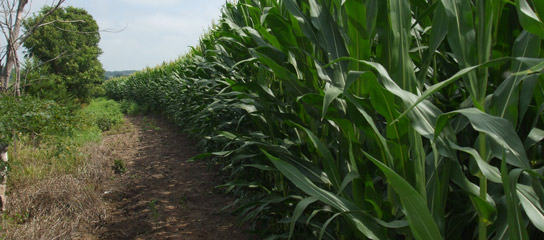
Within a few minutes of arriving at the site and properly setting up the X-TERRA 705 with the Coiltek coil, I got a solid audio tone with a TID that locked on at 32.
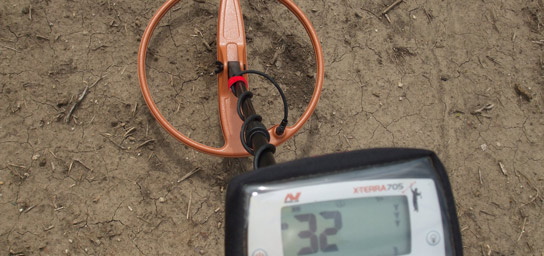
Pinpointing on the Coiltek 15-inch ALL TERRAIN coil is no different than with any Double-D coil. If you learn where the ‘sweet spot’ is on the coil, you can get a good idea of the target location by X-ing back and forth over the target area and honing in on the audio response. Another method I’ve found effective on larger coils is to slowly move your coil back and forth over the target, centering it based on the audio response. While sweeping back and forth over the target, simultaneously drag the coil closer to you. When the target response disappears, the target will be located directly under the front tip of the coil.
After Pinpointing the target, I dug into the edge of the field and pulled out some soil. At a depth of about 6 inches, I saw what I hoped to be one of my favorite coins, an old Indian Head cent...
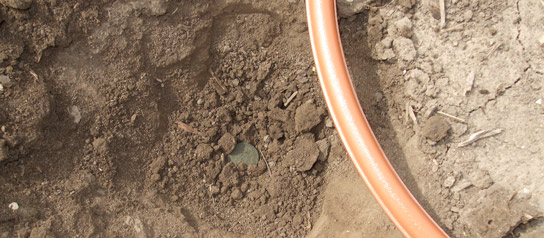
And it was. A 1906 Indian Cent... first old coin with the new Coiltek coil.
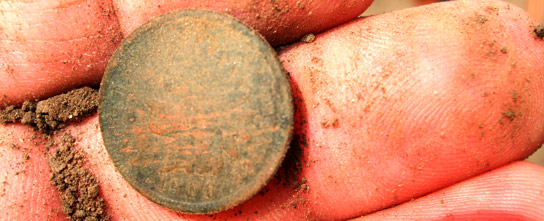
Later, I got a high tone with a TID that had me hoping for a silver dime or quarter. Although the depth icons indicated a shallow target, that didn’t surprise me as this soil has been tilled for generations.
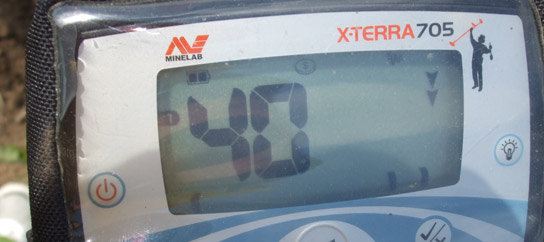
Digging down to a depth of 6 inches, I still hadn’t located the target. So I grabbed the shovel and dug a larger and deeper hole. Upon reaching a depth of 12 – 14 inches, something rolled off the shovel and fell back into the hole.
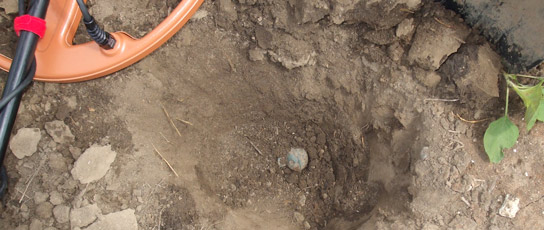
It was a small crotal bell. Crotal bells were used to help ‘keep track’ of livestock and are a familiar find for many of us who hunt old farm sites.
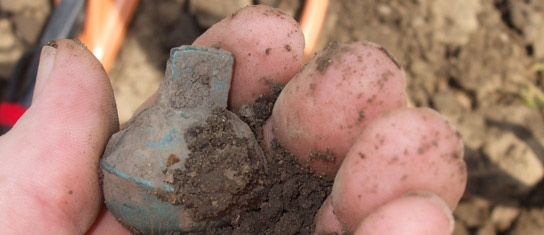
I believe the Coiltek 15-inch ALL TERRAIN coil will be a welcome addition to prospectors, relic hunters, beach hunters and those who like to hunt for coins in wide open spaces. I would not recommend it as your primary coil for coin hunting in areas with an abundance of trash or adjacent targets. The reason I say that is because I am convinced there are more old coins still hiding in parks due to adjacent targets masking the signals then because of extreme depth. As such, Minelab’s 6-inch Double-D coil is still my ‘go to’ coil for coin hunting those trashy areas.
With all that said, I have to add that I was pretty impressed with the separation characteristics of the Coiltek coil. In one of my field hunts, running zero discrimination, multiple tones, I passed over a target area that gave a blended set of tones. Carefully working the area, I managed to isolate a mid-tone signal with a TID similar to a US nickel. In the picture below, you can see the TID of 10, and the coil position in relation to the weeds and the corn stalk lying on the ground.
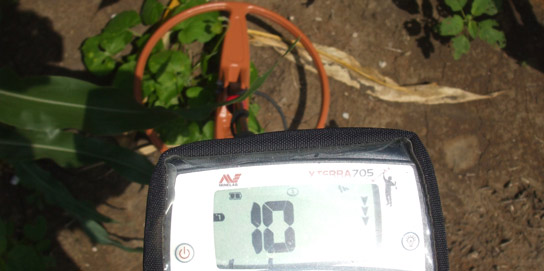
In sweeping back over the general vicinity, I separated another audio tone that was much lower in pitch. In this picture, notice the ‘new’ TID and the exact location of the coil, in relation to those same weeds and corn stalk. The minimal distance between these two targets demonstrates the excellent separation capabilities of this coil.
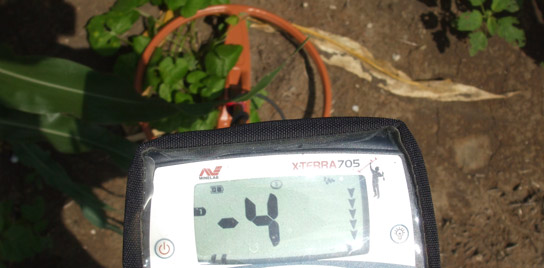
Within a few inches of each other, I recovered a piece of old iron and what appears to be part of an old lead wheel (maybe from a child’s toy wagon).
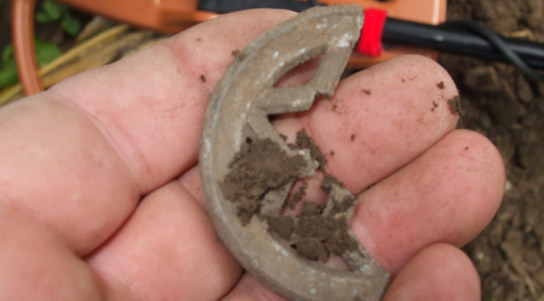
So what do I think? Although I found it to be more weight than I can comfortably handle for long periods of time without a harness, I think for those X-TERRA users who have been asking for a large, well-built coil that provides extreme depth and covers a lot of ground with each sweep, while continuing to provide very good discrimination characteristics and surprisingly good target separation, this just might be the product they’ve been waiting for.
I appreciate Minelab responding to the requests of X-TERRA users for a large coil, and working with Coiltek in providing the Double-D 15-inch ALL TERRAIN coil at 7.5 kHz.
HH Randy




















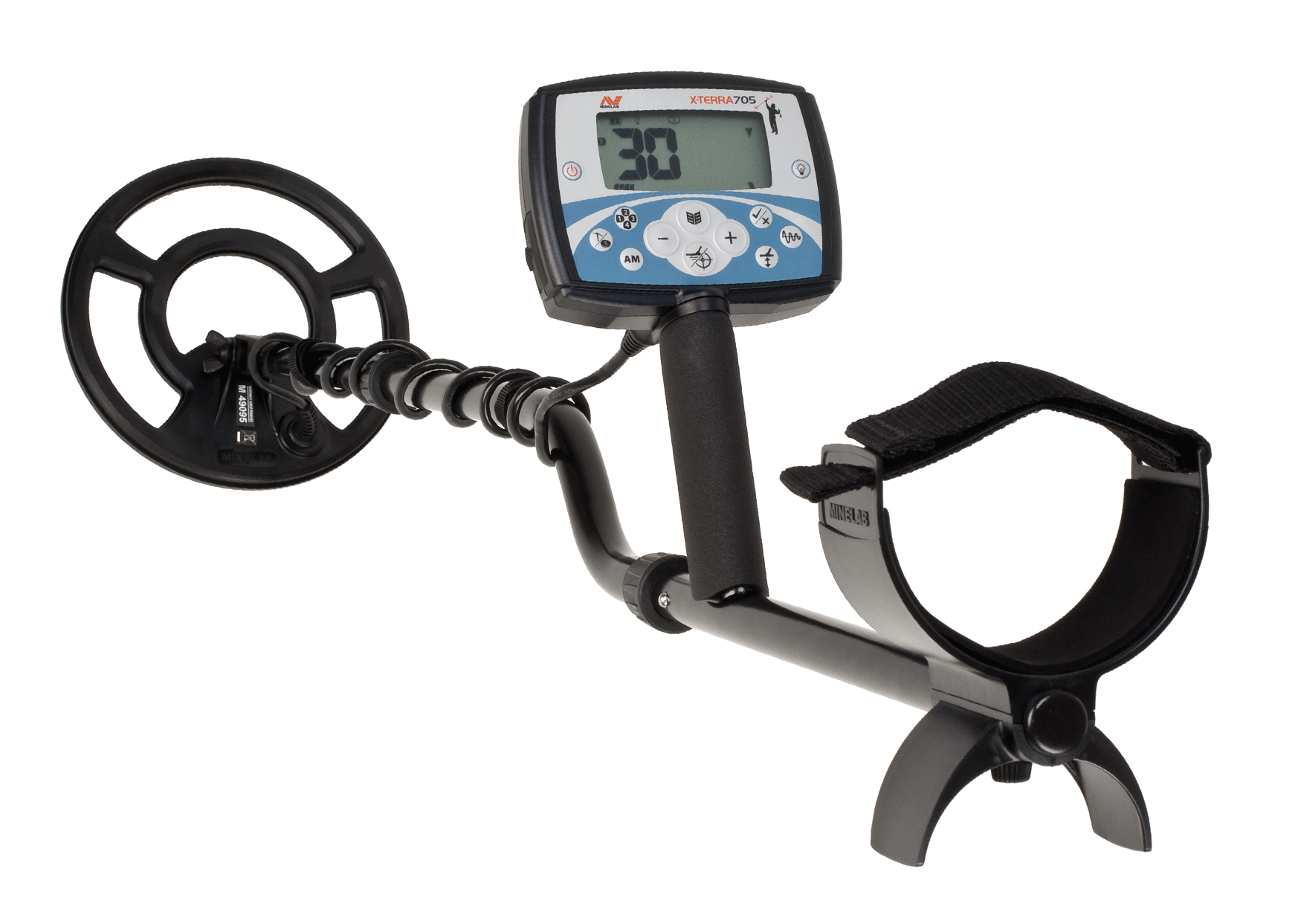
Comments
Tightwad
N Carolina
As to your backyard......if you're getting TID readings in the 30's and 40's all over your backyard, make sure the NC, GB and Sensitivity are properly set. Once they're set, go back over the area making sure the coil is just skimming over the top of the soil. When you get a target whose TID represents something that you've determined is something you are interesting in digging, dig it up and see what it is. Targets with TID values in the 30s and 40's are typically pennies, dimes, quarters and BIG SILVER! That's not to say you won't dig an occassional smashed aluminum can. They will fool just about all of us at times. But if you find yourself digging large worthless targets that sound good when you sweep, raise your coil a foot or so in the air and sweep back and forth over it. If you still get a loud, wide response, I'd be willing to bet that it won't be a coin. Know up front that you're going to have to dig some trash to find those lost gold rings. But don't despair. If it were easy, everyone would be doing it. Best of luck to you. HH Randy
Tightwad
NC
The first thing I thought of when I read your first post was aluminium flashing trimmings. The second was sensitivity.
We recently had our house sided in Vinyl, and construction people are so messy they cut the aluminium flashing to fit at the top of a ladder with a air driven cutoff wheel, and let it fall to the ground, of course. At least they did a good job of sweeping the driveway for nails with a magnet roller. The bits and pieces are typically coin sized and up to about 2-3" in size. Since they are aluminium, and flat they come up 28-44, just like coins.
If you have your sensitivity too high that is the next likely culprit.
How are you going to get hooked on metal detecting in your yard. You need to hit a tot lot or park when no one is there. Practice finding clad. Or are you just trying to find a ring you lost in your yard?